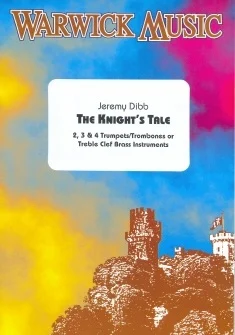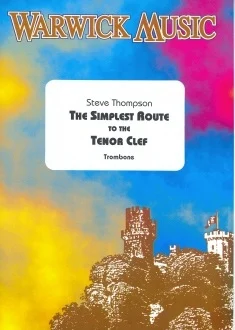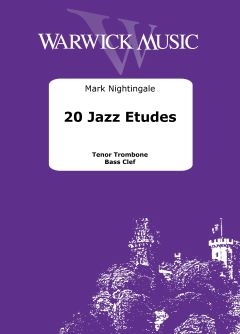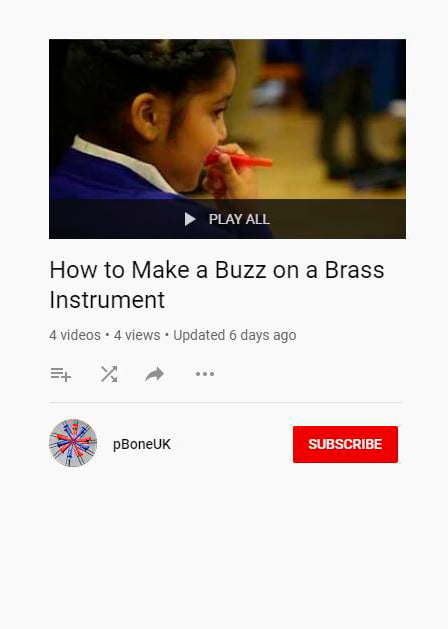How to Play Trombone
In this beginner guide for those starting their trombone-playing journey, we’ll share some fundamentals about how a trombone works and the different types of trombones. We will delve into some practical lessons to get you started.
We will also provide you with some really useful initial resources, like trombone slide position charts, free resources including sheet music and backing tracks, and a series of easy-to-follow video lessons.
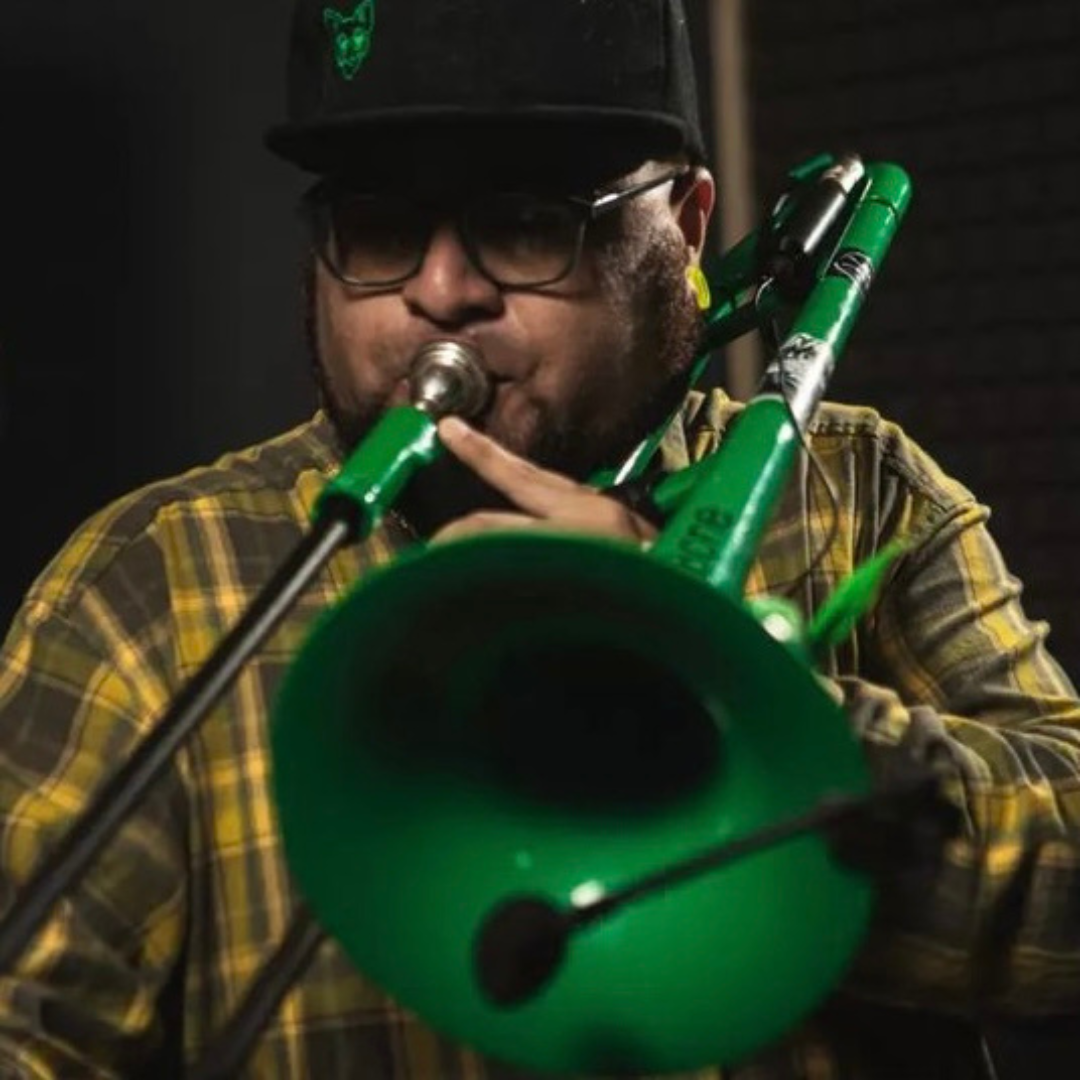
What is a trombone?
The trombone is an old and important member of the brass instrument family. The trombone has been around in some form since the 1500s, developed from early trombones it was originally known as a sackbut.
By far the most common type of trombone is the modern Bb tenor trombone. This instrument was first produced about 1700 and apart from bore and bell size hasn’t really changed that much since.
Nearly every trombone player begins their journey on a Bb tenor trombone. The tenor trombone can be found playing in various musical styles and ensembles including classical, jazz, rock, pop, and folk music.
How does a trombone work?
The trombone plays in concert pitch: when the trombone player plays a written C, the note that comes out is the same as a C on the piano.
Unusually the trombone is written in many clefs but most players begin their journey in bass clef, playing notes that look and sound like the notes played by the left hand on the piano.
The only real exception to this is in British Brass Bands, where the tenor trombone plays in Bb treble clef, as long as the player plays brass band music this isn’t a problem but other ensembles tend to stick to concert pitch in C bass clef.
Making a buzz
All brass instruments work by the player buzzing their lips together into a mouthpiece, which in turn vibrates the air inside the instrument creating a sound. All brass instruments are basically empty tubes that you can change the length of. On any length of tube you can play a pattern of different pitches or notes by changing your buzz using your lips and the controlling air that you blow through them.
You will have heard this pattern played by bugle calls; this is the known as the harmonic series, sometimes called partials, and whatever length of tube you choose the pattern remains the same. With the trombone, every time you add more tubing with the slide this pattern becomes lower in pitch so by choosing a tube length and a harmonic you can play all the notes you’ll ever need…with practice!
What are the different types of trombone?
As well as the Bb tenor trombone the broader trombone family is much larger than you might at first realize, with instruments of all sizes and some specialized for specific genres.
The Trombone section
Trombones and their players are known for their gregarious nature and are usually found in sections! In most bands this will take the form of two tenors and a bass trombone and in a jazz genre big band, three tenors and a bass. Sometimes, especially when accompanying choral music, an orchestral section will have an alto, a tenor, and a bass and will spend most of the piece supporting the choir’s singers.
Of course, there are plenty of times when there is only one trombone player like in a jazz combo or rock/pop band horn section. Sometimes music theatre productions only have one trombone player and quite often this takes the form of a bass trombone player.
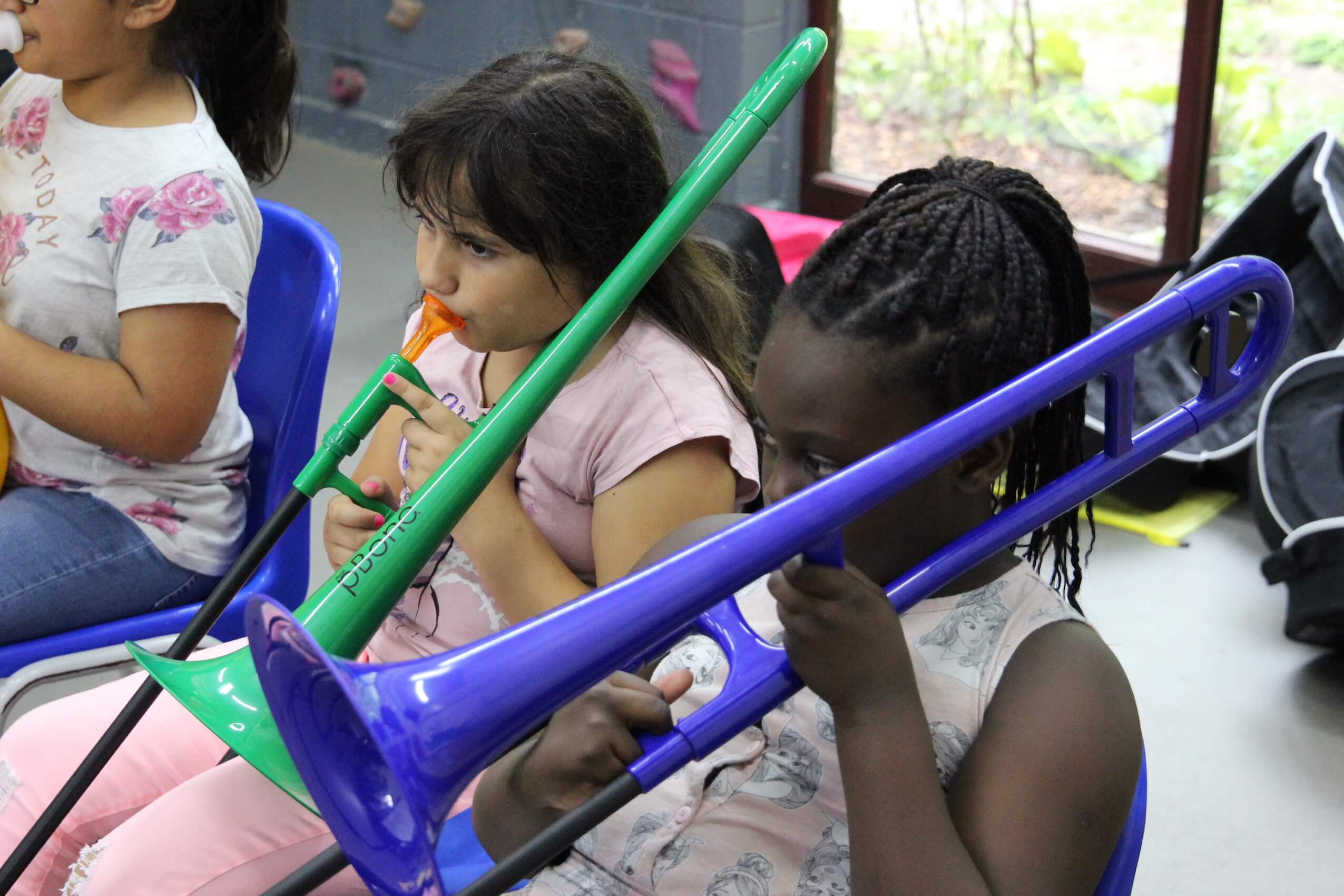
The Trombone Family
The B♭tenor, slide trombone is by far the most popular trombone and the one most players begin learning how to play trombone on. Like all brass instruments however, the B♭tenor trombone is part of a whole family of trombones ranging from the tiny sopranino trombone, which is a quarter the length of a B♭tenor to the big contrabass trombone which is up to twice as long as the normal B♭instrument. Some trombones use piston valves (like the B♭trumpet) and are called valve trombones and others have short, round rotary valves either instead of the hand slide or to augment the tube length options, but they all do the same job, adding tubing.
See and hear the trombone!
Use this section to give context to the images and/or videos that will be displayed below.
Music terminology for beginners
When learning to play the trombone, having a grasp of some of the musical terms can really help with progression. Here are some examples to get you started!
Pitch
How high or low a sound is. Usually shown as a letter: A-G and by where the written note is placed: higher or lower on the music stave or staff.
Duration
How long or short a sound is. Measured in beats and shown by the shape of a written note.
Beat
How to measure and describe the passing of time in music, the heartbeat or pulse of the music, what you tap your toe, march, or dance to. Measured in beats per minute (BPM) or expressed in an Italian term such as Presto (fast), Andante (walking pace), or Largo (slow).
Stave or Staff
The familiar horizontal lines that written music is placed on. Think of this like a ladder: the higher the note has climbed the higher the pitch it represents.
Clef
A symbol at the beginning of the music that tells us which pitch belongs on which line of the staff or stave. On trombone, we use the treble or G clef which means the second line is where the note G lives.
Bars and bar lines
Vertical lines on the staff or stave, bar lines help us organize time by dividing the horizontal format of the music into bars.
Time signatures
These numbers at the beginning of a piece of music tell us how many beats are in each bar (top number) and what type of note each beat is made from (bottom number). i.e. 44 – four crotchet beats per bar.
Getting started with trombone
If you are starting your trombone journey, our Learn to Play Trombone course is a great place to start. Follow the free video lessons with Liam Kirkman, the former president of the British Trombone Society.
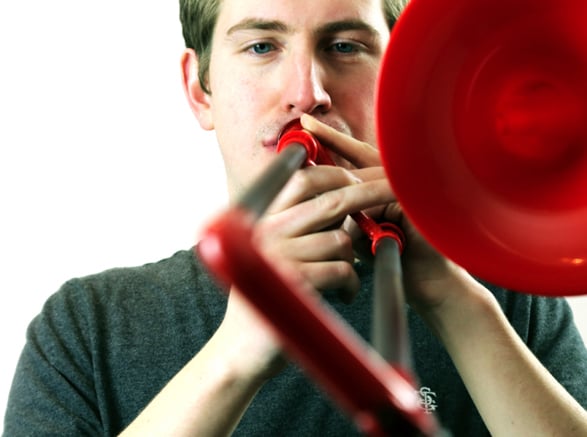
Free trombone resources
These free downloadable resources are suitable for beginners or players looking to rediscover their love of the trombone.
Learn to play pBone Mini (Treble Clef Edition)
Treble Clef Edition PDF: Everything you need to get playing on your pBone Mini. Check out the videos and backing tracks listed below to help you on your way!
Learn to play pBone Mini (Bass Clef Edition)
Bass Clef Edition PDF: Everything you need to get playing on your pBone Mini. Check out the videos and backing tracks listed below to help you on your way!
Quick Start Guide for pBone
A quick and simple guide to get you started on pBone with backing tracks.
Mark Nightingale: Easy Jazzy ‘Tudes (trombone treble clef)
Easy Jazzy ‘Tudes is now available with professionally recorded backing tracks that enhance your playing experience. Each copy now comes with its own CD, but don’t worry if you already own a copy because you can download the backing track individually from iTunes.
Trombone Trio: Easy Jazzy Trios (treble clef)
Simple trio arrangements of Mark Nightingale’s popular Easy Jazzy Tudes.
Trombone Duet: The Knight’s Tale
Two short duets ideal for beginner brass group from Jeremy Dibb’s The Knight’s Tale.
Trombone: The Simplest Route to the Tenor Clef
Exercise 1 from Steve Thompson’s The Simplest Route to the Tenor Clef based on Frere Jacques.
Trombone: Jazz@Etudes (treble clef)
Two simple studies especially for Treble Clef trombonists
Learn to Play Trombone Video Playlist
These different videos have all you need to know to make a buzz on a brass instrument.
Finding trombone lessons
There are a lot of opinions, information, and videos on the web about learning a musical instrument. That’s because finding a great, instrumental teacher to guide, inspire, and lead your child is one of the most important aspects in helping them develop as a musician. For support in finding a trombone tutor, check out our guide.
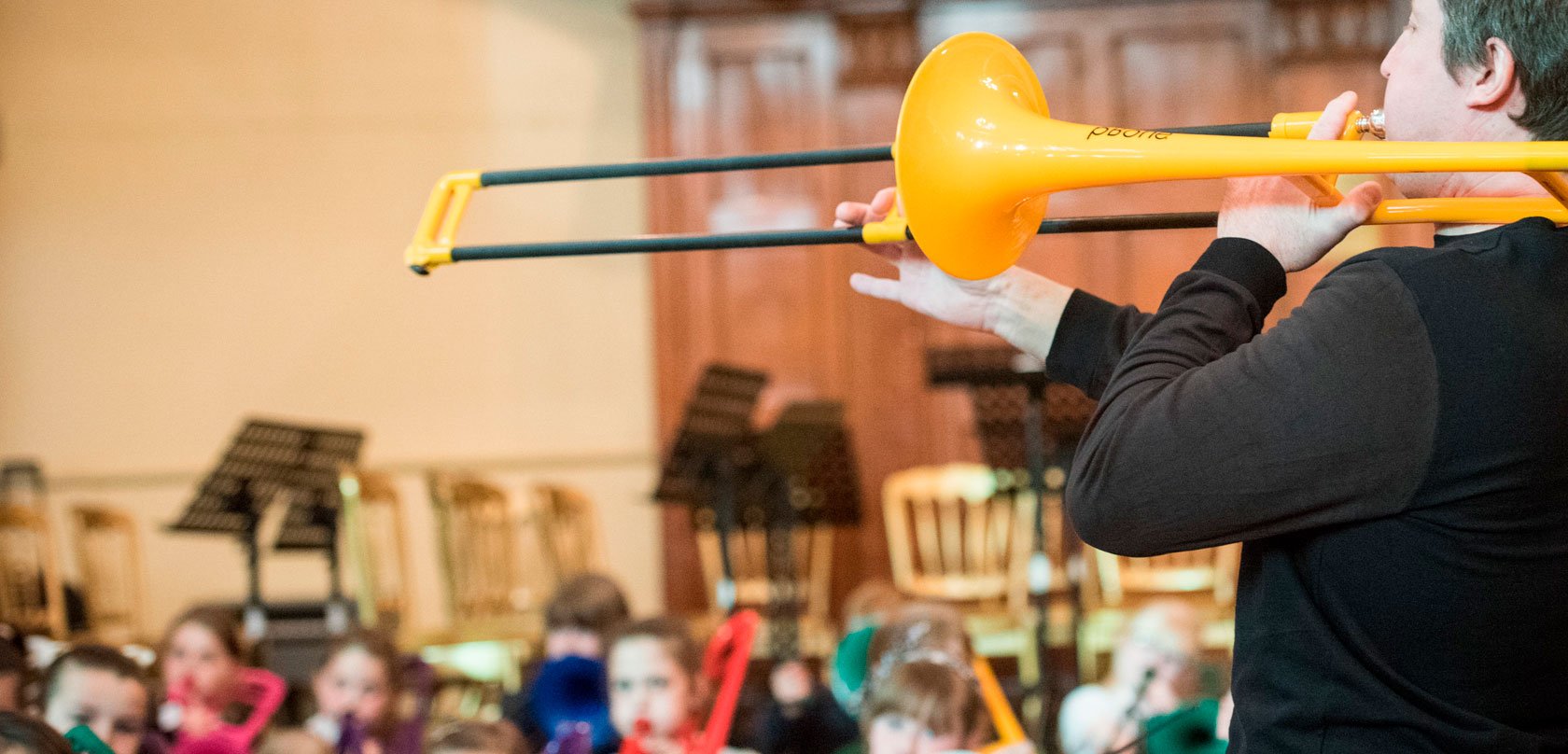
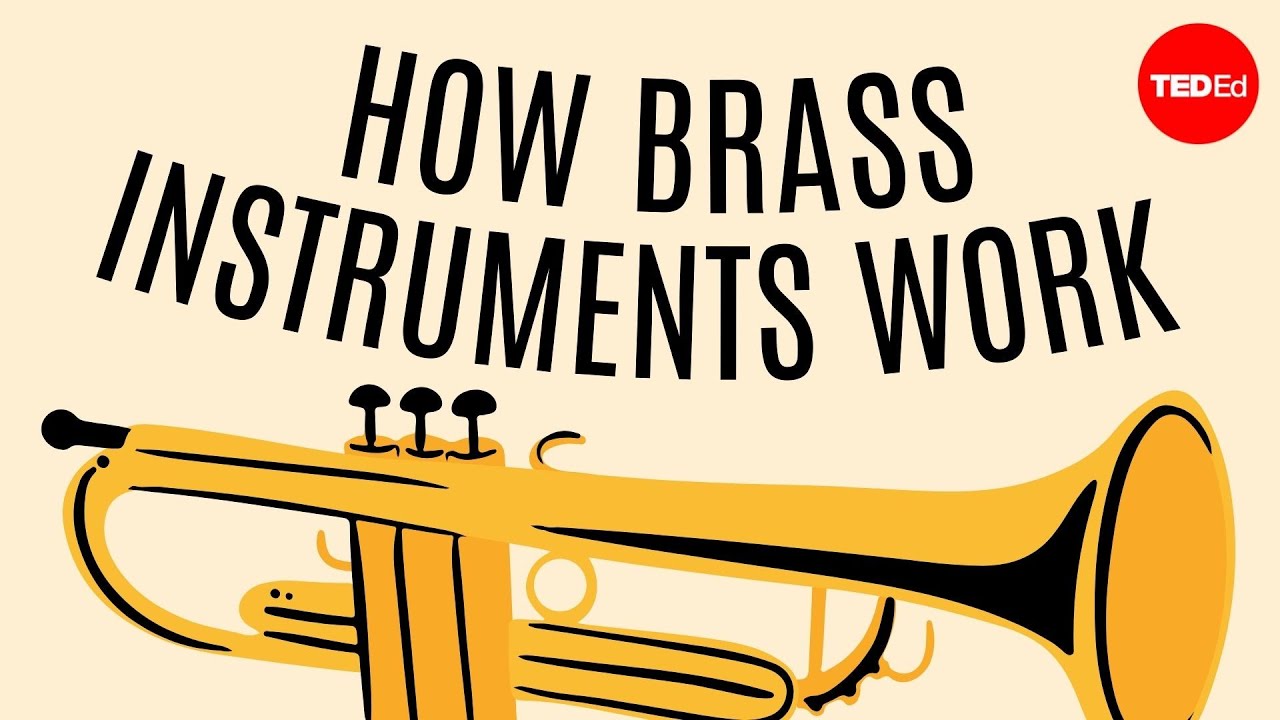
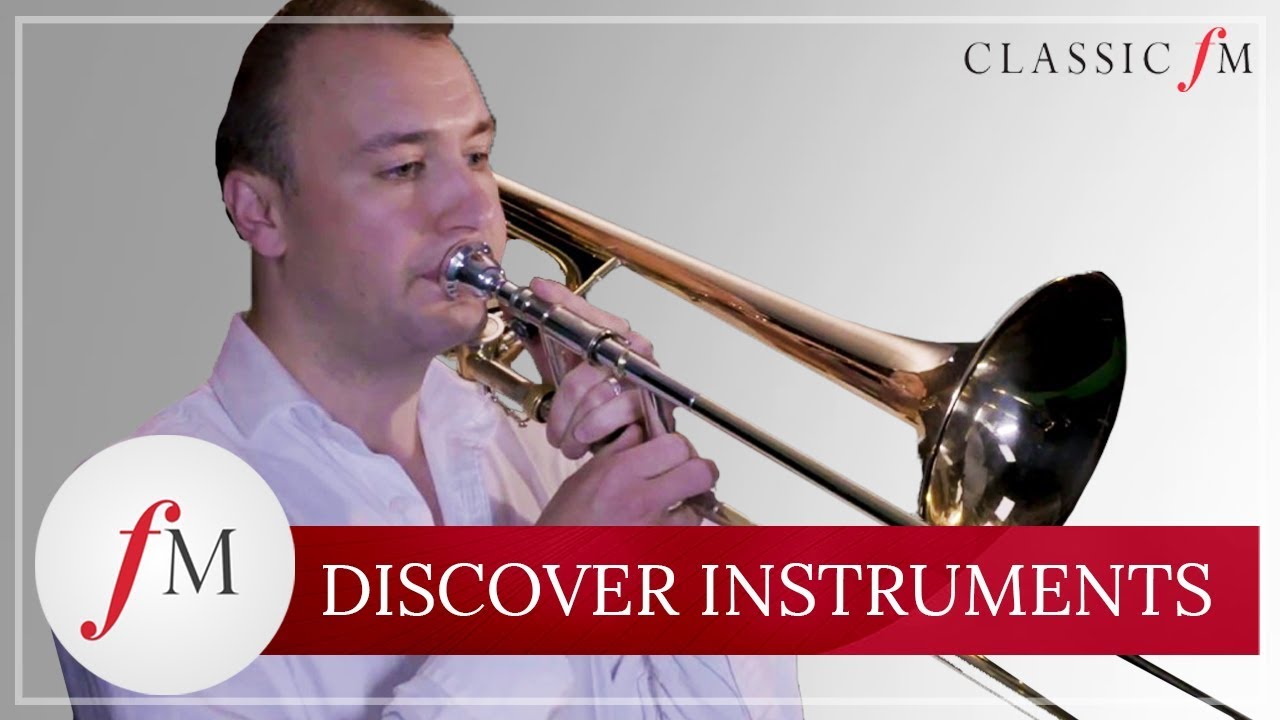
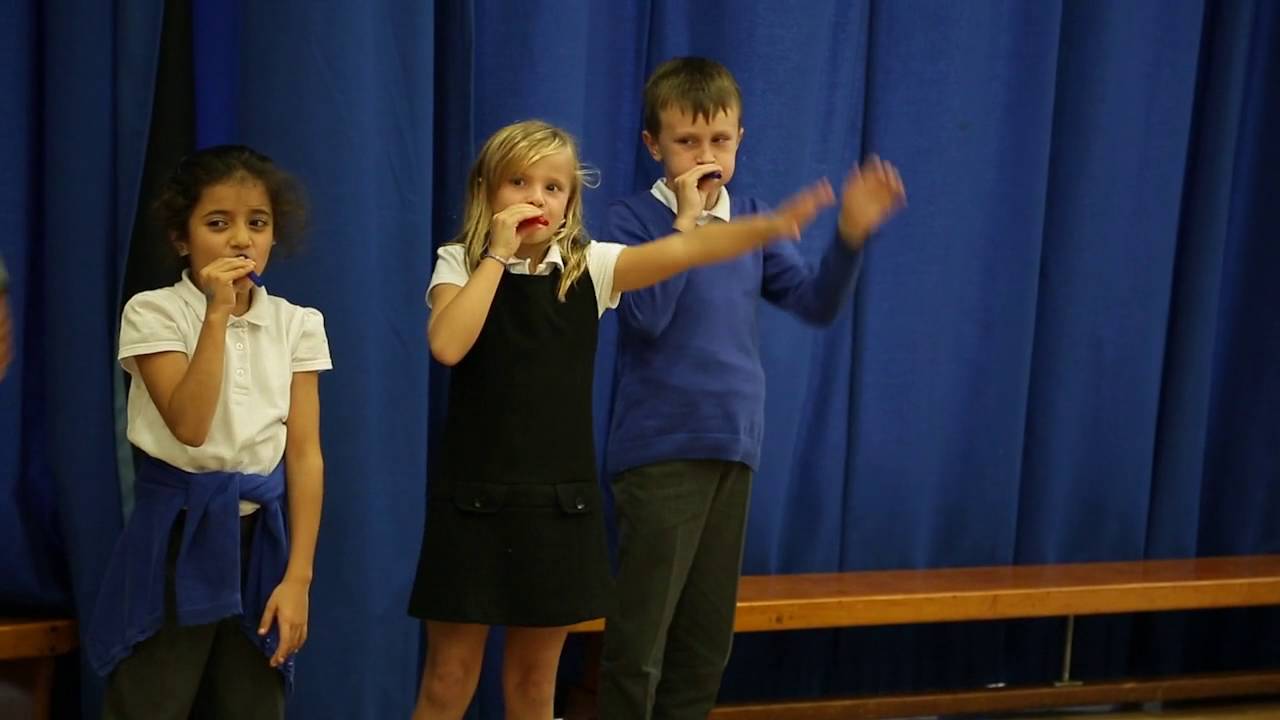
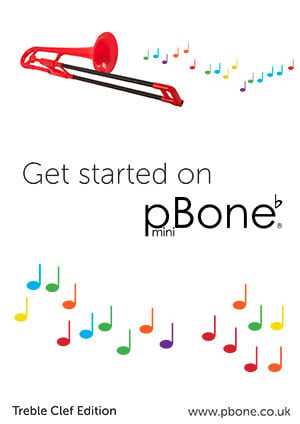
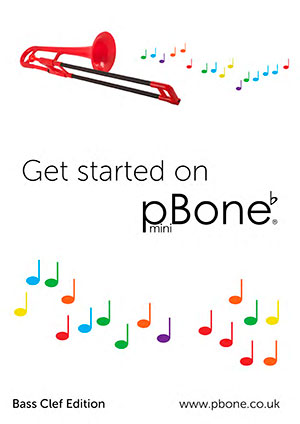
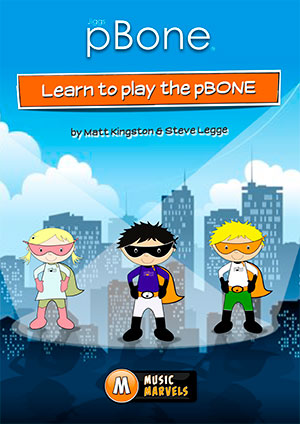
.jpg.webp)
.jpg.webp)
